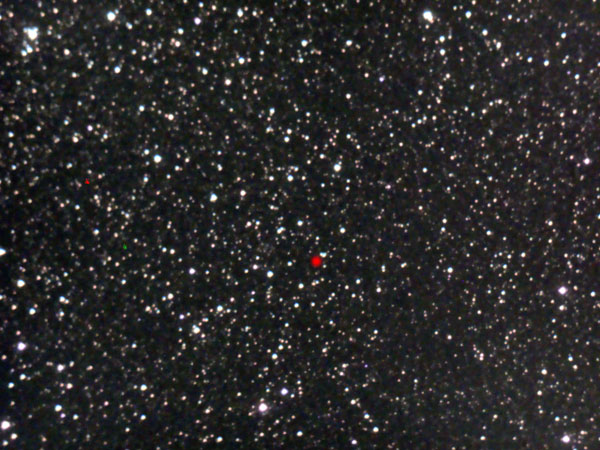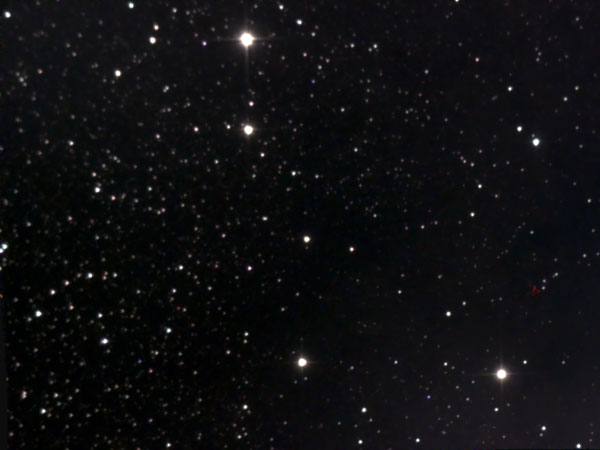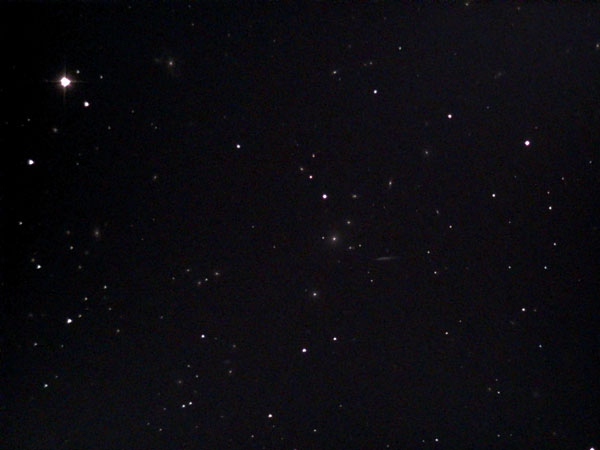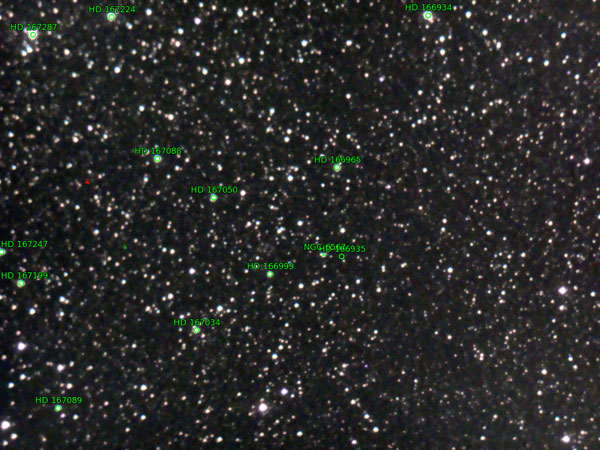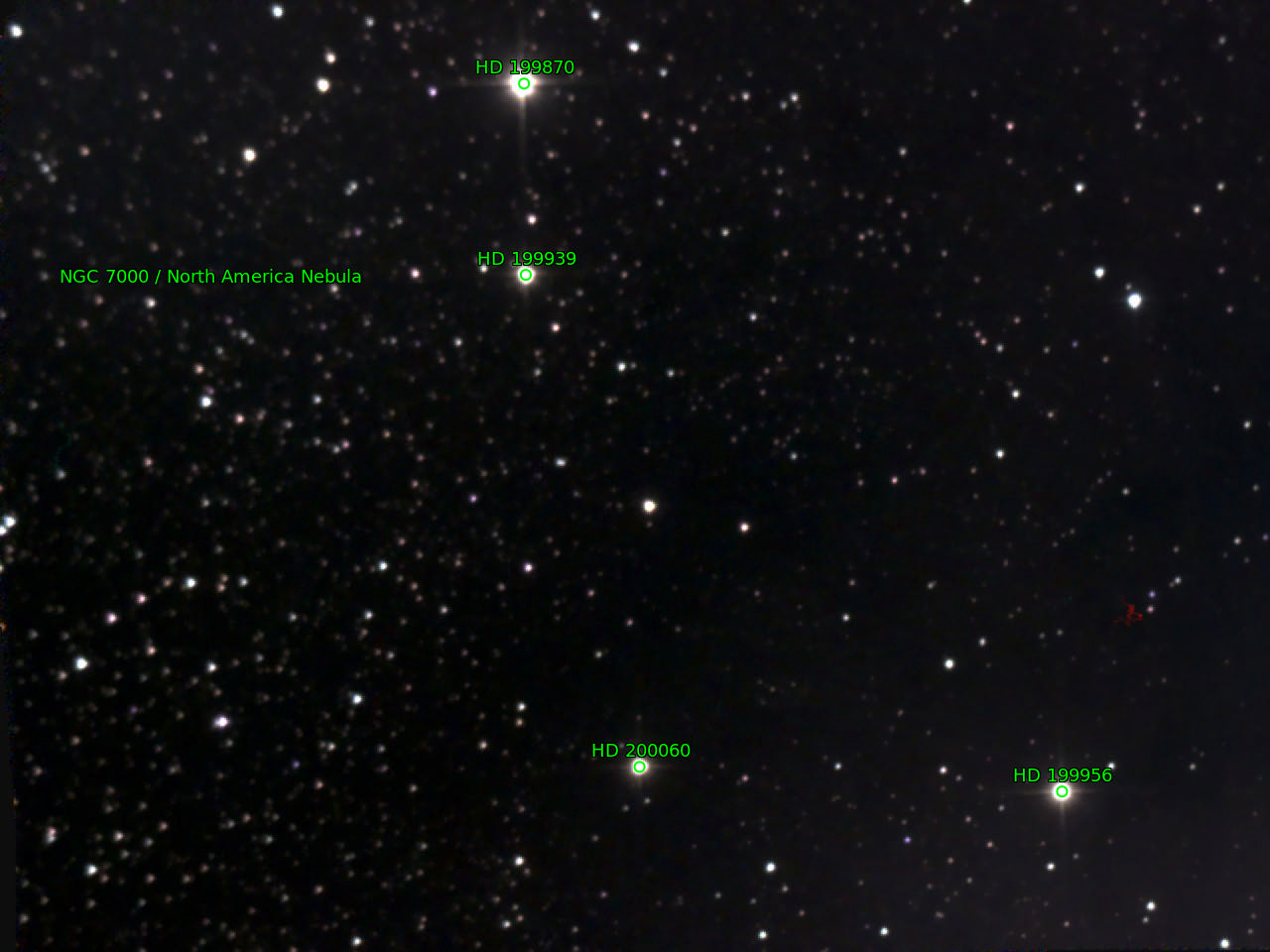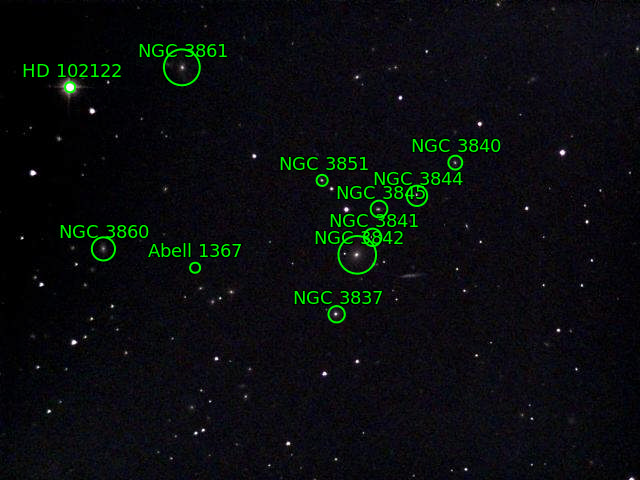How to Confirm Finds? (Take 2)
On this page, I will go again into the question of how to confirm that you have actually photographed or seen the intended sky object. I already wrote the essentials in the article How to Confirm Finds? (Take 1) and these can be read there. Here, I add first experiences with the online plate solving application Nova.astrometry.net.
Notes:
- I use the eVscope as the "reference system" here, but what is presented here applies in principle to any astrophoto.
- See also How to Confirm Finds? (Take 1)!
Introduction
When doing quick astro photography, for example, with the eVscope, the basic question is: Is what you see in the eyepiece or on the smartphone screen indeed the sky object you are or were looking for? In the meantime, there also came up the question of, which celestial objects one sees at all; this is especially true for small galaxies.
Successful Finds
First, I would like to address the successful finds! Unlike visual observations, photography provides a result that can be easily compared with photos or sketches from books or the Internet. My preferred sources are described on page How to Confirm Finds? (Take 1) further below. In addition, the eVscope delivers a result that is more similar to that of cameras than to the visual impression. Therefore, comparing photos with photos is usually preferable to comparing them with drawings, which usually correspond to the visual impression. But I often use both to see how the individual representations differ and complement each other.
Not so Successful Finds
Now let me turn to the "not so successful finds"! When I compare my photos with photos or drawings from books or the Internet, I can unfortunately not find a match in some of them. Obviously I had photographed something completely different than intended - but what? Initially, I had the obvious idea to use astronomy applications to search the surroundings of the "unknown objects" for matching patterns. But so far my experiences with these applications have been such that I was rarely able to establish a relationship between what the camera photographed and what the applications showed. In other words, the applications do not help me in my search.
The Solution: Plate Solving
So I looked for other solutions. And that is when I came up with the term "plate solving," which stands for algorithms that can recognize which part of the sky a camera or a photo shows. I had already stumbled across this term in connection with the eVscope, because it uses this technique itself to find objects in the sky. But I had not pursued this topic any further, particularly since I did not see any practical use in it for me at first. But after so many failures in photographing open star clusters with the Atik Infinity camera, plate solving appeared to me as a viable approach way to find out what the camera actually photographed. This impression was also confirmed when I came across the Website of Dietrich Kracht, who describes this method and programs in detail (in German). More about this on page How to Confirm Finds? (Take 1) > Plate Solving!
At the beginning of 2020, I had a similar problem with the eVscope: On some of the photos that I took with the eVscope, it was not clear to me whether the object on the photo (or as it was labelled on the photo) was really the object I was looking for. Visual comparisons with my books did not always lead to success, and so I resorted to the plate solving method!
Nova.astrometry.net
Dietrich Kracht describes two plate solving applications, All Sky Plate Solver and Nova.astrometry.net. The latter is a Website that allows you to find out which part of the sky is shown on photos (instructions for Nova Astrometry.net by Dietrich Kracht, in German) and thus, an "easy" alternative to All Sky Plate Solver. In contrast to the latter, you have to be connected to the Internet (there also seems to be available a way to work offline using Windows). As with All Sky Plate Solver you start from photos, but upload them to the Website and have them processed there.
One advantage of Nova.astrometry.net is that you get sky maps right away and do not have to enter coordinates into an astronomy program to see the corresponding part of the sky.
I tried Nova Astrometry.net with several photos taken with the eVscope. These were photos where I was not sure what they showed or whether they were labelled correctly. Here are some examples!
Note: Meanwhile, Nova.astrometry.net has become the "tool of choice" for me, when it comes to determining DSOs on photos using plate solving.
NGC 884/869
Here I search in eVscope photos of the Perseus double cluster for targets.
Photos |
||
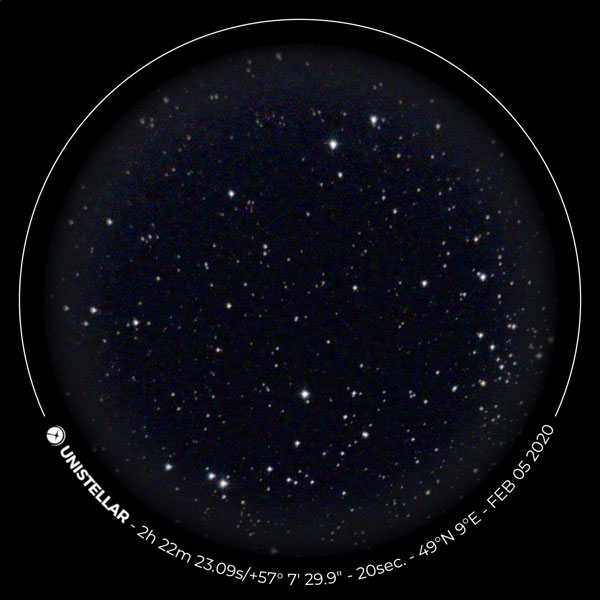 |
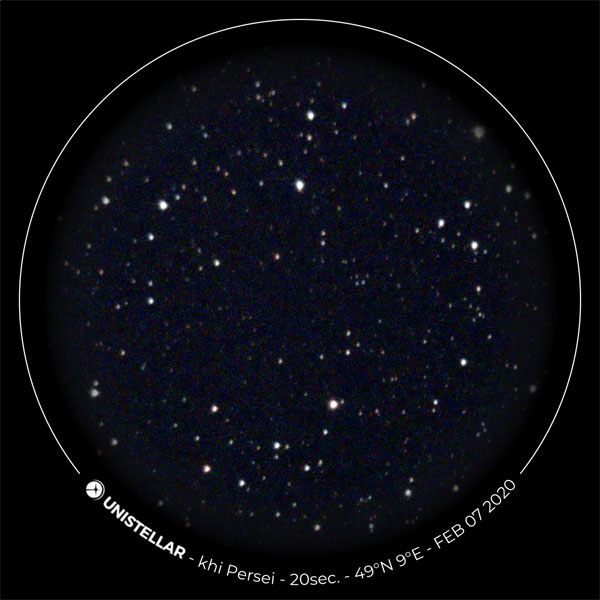 |
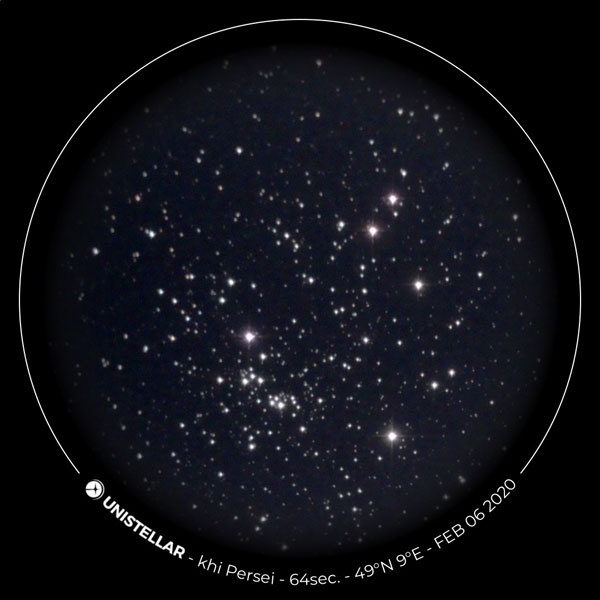 |
NGC 884/869 - eVscope, processed (below NGC 884) |
NGC 884/869 - eVscope (far left of NGC 884) |
NGC 884/869 - eVscope (NGC 884) |
Solutions |
||
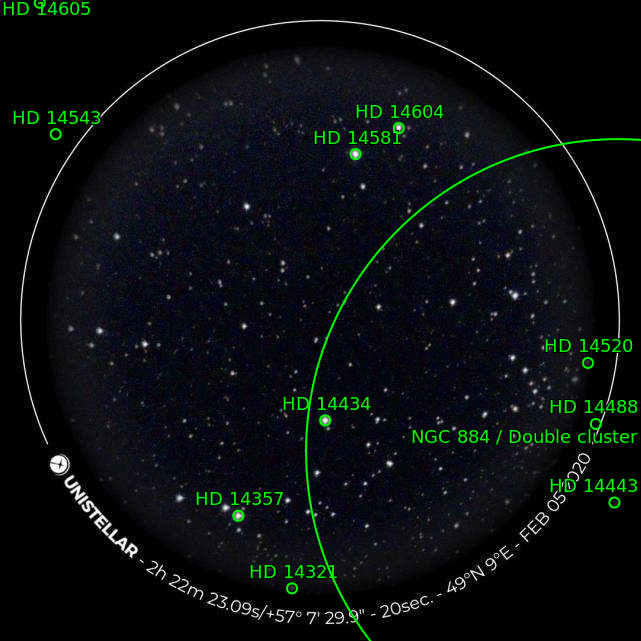 |
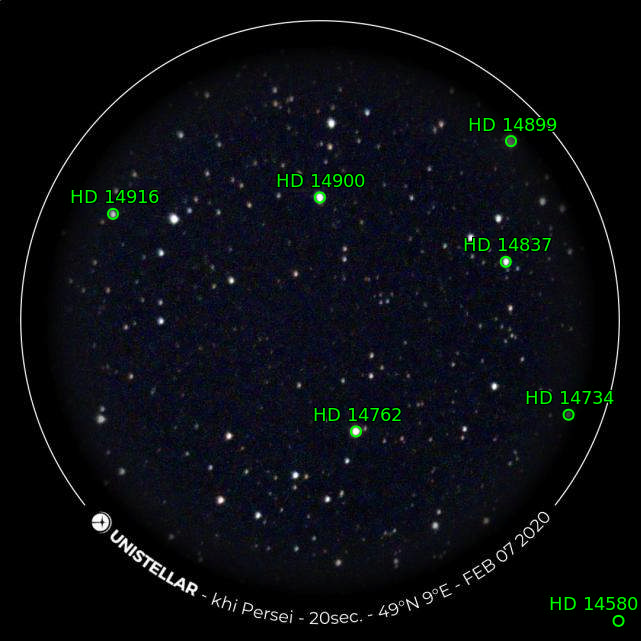 |
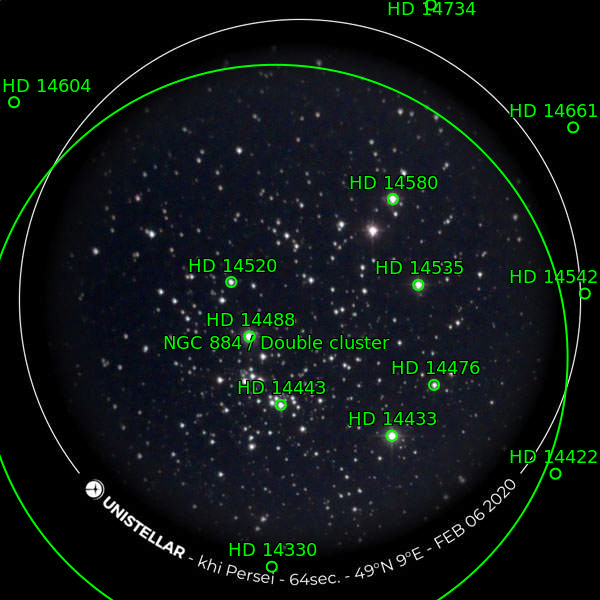 |
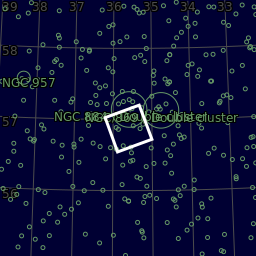 |
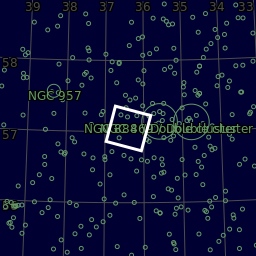 |
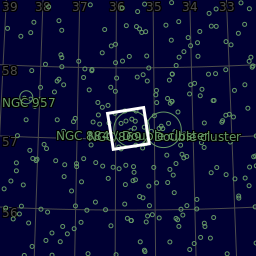 |
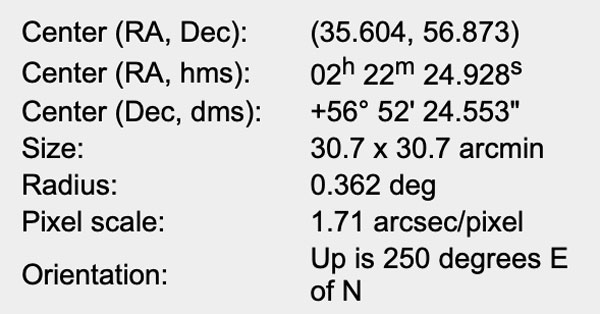 |
 |
 |
M 35, M 36, M 38
Here I search in eVscope photos of M 35, M 36 and M 38 for targets.
Photos |
||
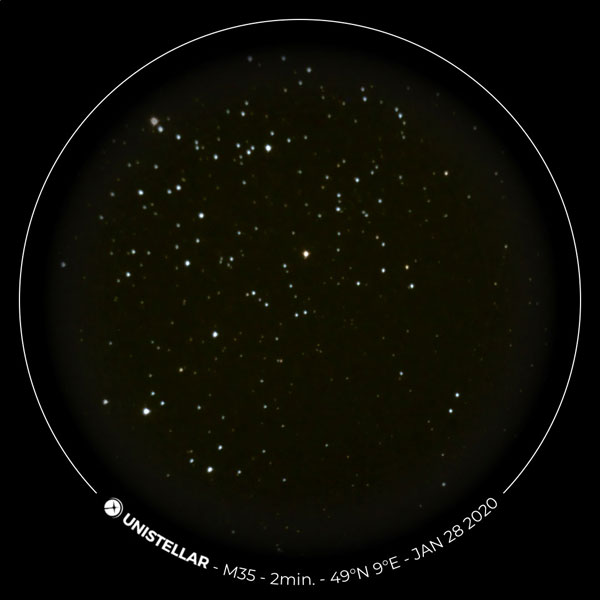 |
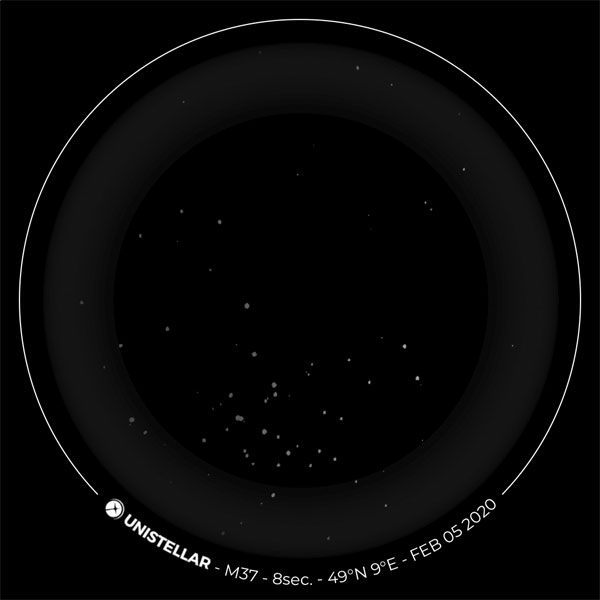 |
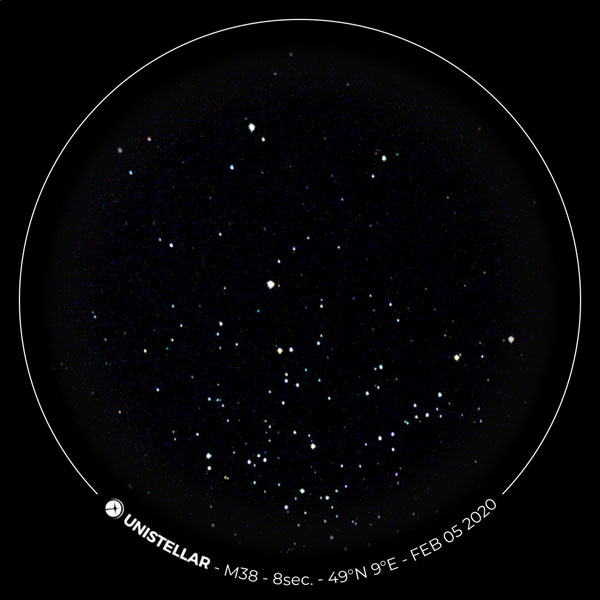 |
M 35 - eVscope |
M 36 - eVscope - wrong label! |
M 38 - eVscope |
Solutions |
||
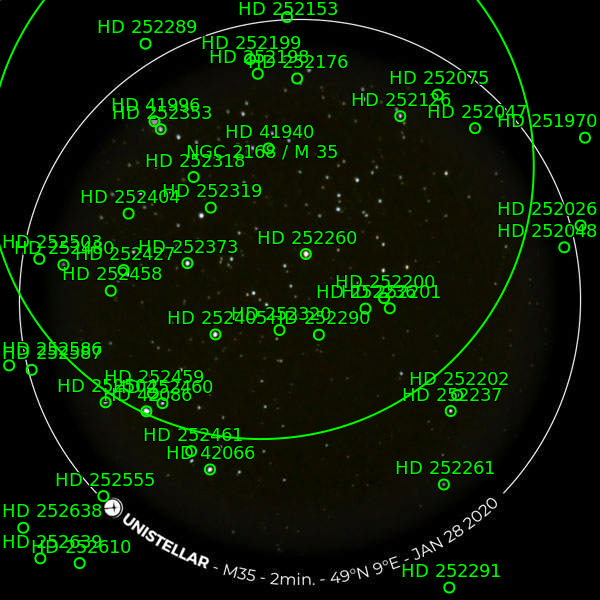 |
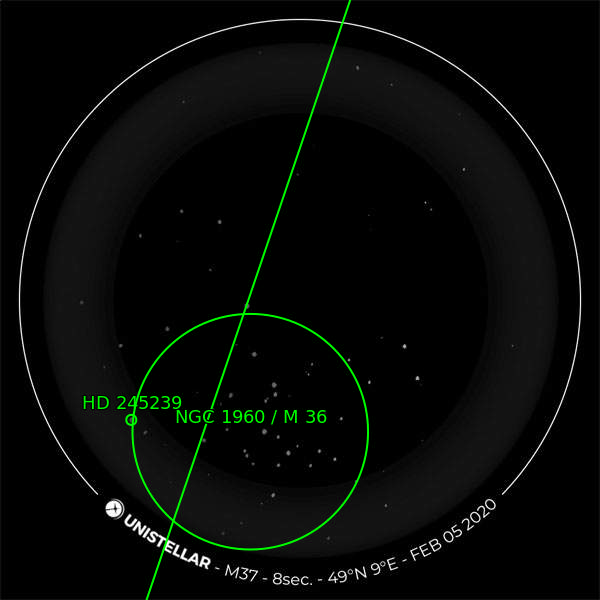 |
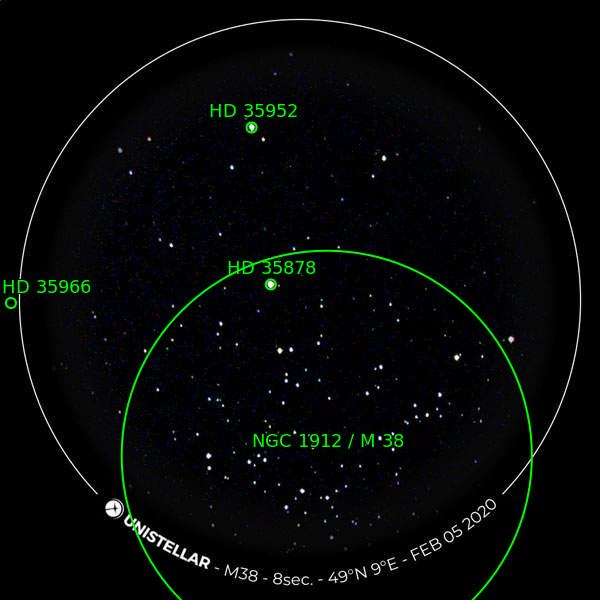 |
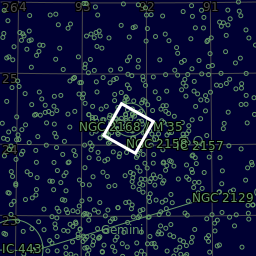 |
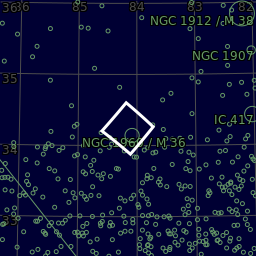 |
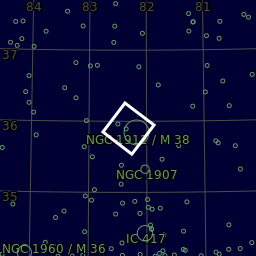 |
 |
 |
 |
Search for Small and Large Objects
Over time, the eVscope got better at "hitting" DSO well. And so further use cases of Nova.astrometry.net came to my mind:
- Finding small objects, such as planetary nebulae, distant planets, small single galaxies
- Idetifying large objects, especially large nebulae and open star clusters, of which eVscope photos often only show a small section.
- Identifying /finding small (often distant) galaxies; any somewhat "fuzzy star" can be considered a potential galaxy...
Here are three examples!
Further Galaxy Example: M 84, M 86 (Great Galactic Face), and More
The following galaxy photo was taken with the ZWO ASI294:
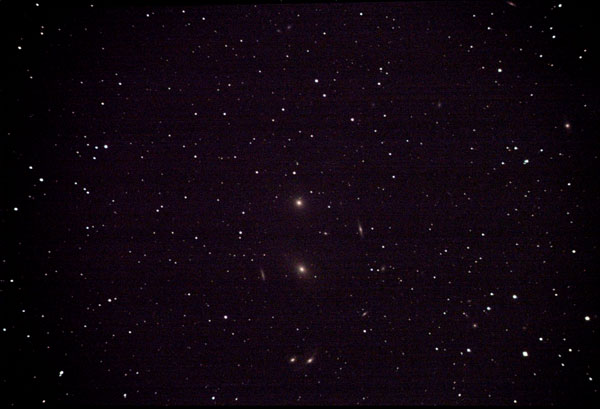 |
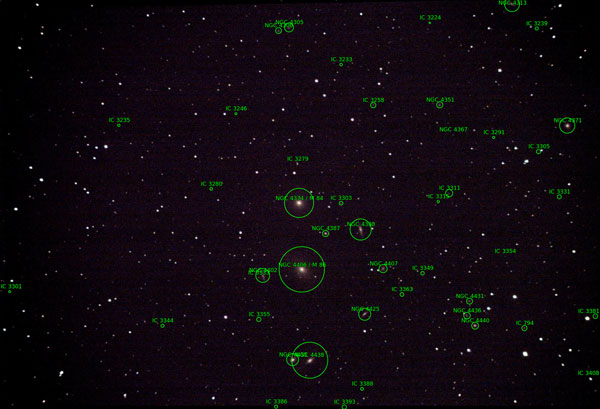 |
|
M 84/86 - Apr 28, 2022, processed |
M 84/86 - Apr 28, 2022, processed, evaluation with nova.astrometry.net |
The galaxies M 84 and M 86 form together with the smaller galaxies NGC 4387 (nose) and NGC 4388 (mouth) the "Great Galactic Face". Close to M 86 there is the galaxy NGC 4402.
Larger galaxies: M 84, M 86, NGC 4305/06, NGC 4313, NGC 4351, NGC 4371, NGC 4387/88, NGC 4402, NGC 4407, NGC 4425, NGC 4435/38 (The Eyes), NGC 4431/36/40
See page ZWO ASI294 Color Camera - Galaxies for further photos of multiple galaxies.
Preliminary Conclusions
With Nova.astrometry.net, thanks to the Website of Dietrich Kracht, I found a solution that makes it quite easy to determine which sky objects my eVscope (or any other camera) photographed. Meanwhile, Nova.astrometry.net has become the "tool of choice" for me, when it comes to determining DSOs on photos using plate solving. As shown, certainly further creative applications can be found...
References
- Astrofotografie: Plate Solving: Welche Sterne sind auf meinem Bild? (Dietrich Kracht; in German): blog.kr8.de/plate-solving/
- Astrofotografie: Plate Solving mit All Sky Plate Solver (Dietrich Kracht; in German): blog.kr8.de/astrofotografie-all-sky-plate-solver/
- Astrofotografie: Plate Solving mit Nova Astrometry (Dietrich Kracht; in German): blog.kr8.de/astrofotografie-platesolving-mit-nova-astrometry/
- All Sky Plate Solver (Giovanni Benintende): www.astrogb.com/astrogb/All_Sky_Plate_Solver.html
- Nova.astrometry.net: nova.astrometry.net - Upload of images: nova.astrometry.net/upload
- See also my page with Astronomy Links.
| 23.11.2023 |
